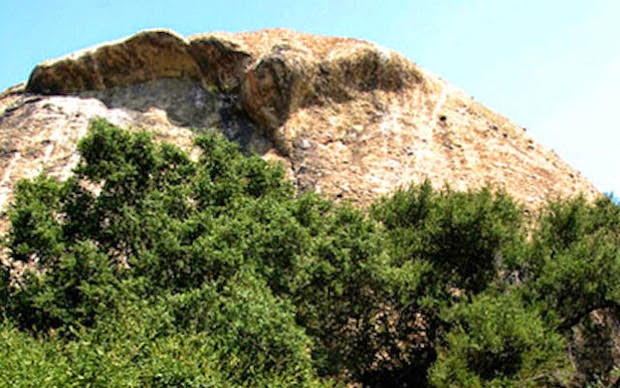It rhymes!
Finally made it to the Pompeii exhibit at the California Science Center. And the artifacts from Pompeii--including the ash shells of victims of the volcano--will be in L.A. through the end of the year (until January 4, 2015, to be exact), so there's plenty of time for you to go, too.
And if you go, I strongly urge you to watch this hour-long BBC documentary first. Really, I wish I had--I would have gotten more out of the exhibit. The link goes to the Science Center Pompeii History page--scroll down a bit to the video, titled "Pompeii--A Mystery of People Frozen in Time."
Made only last year, it tells of the latest discoveries about Pompeii, including how those people died in such a way as to leave a shell of their body. I had picked up a lot of misinformation over the years and found this program fascinating.
At the exhibit, you are allowed to take pictures! Seriously, so many places do not allow photos, even with the flash off, and I've never figured out why. The folks at the California Science Center are more enlightened than most, I guess.
And they're all incredibly nice.
This first mosaic is a floor from the villa of Publius Fonnius Synistor, Boscoreale--near Pompeii. It's dated 1st century B.C., and since the eruption that buried everything was in 79 A.D., it was well over 100 years old then. No dimensions were listed, but it was not large--five or six feet square, I think.
The Pompeii exhibit--except for the very end, after the bordello room--focuses on the everyday found objects that reflect life in a wealthy Roman town of 25,000 people during the first century A.D. Most of the objects are in display cases with little signs identifying what they are; a few have codes for the audio program description so that you get a lot more detail and context.
And the audio program is COMPLIMENTARY.
Another laudable innovation!
Smallish rooms house the exhibit, and in the corner of each room is a wide-screen TV, mounted and playing in a continual loop some informative trivia that helps us understand the objects in the room. One told us all about the layout of a typical Roman home, for example, with video showing the atrium and impluvium. Another room, loaded with amphora and cooking equipment, used a mural and the video to give us a feel for the commercial food vendors of Pompeii, as well as the enslaved kitchen staff.
The next mosaic is the sign of a fish sauce maker--a very successful fish sauce maker.
Fish sauce was called garum, and I learned that it was pretty much the french fry of the Roman world. Everyone made their own version and sold it (I also learned there were over 300 garum-snack-selling vendors throughout Pompeii, selling from small booths to folks who stood to eat or took their food with them).
The sign next to this mosaic--which is about 12 or 14 inches wide--says that this was one of four mosaics that "decorated the corners of the impluvium in the atrium of the house of Aulus Umbricius Scaurus, Pompeii's leading producer of garum, Scaurus acquired great wealth through making and trading the famous fish sauce.
"The inscription reads: "The flower of Scaurus' mackerel garum from the factory of Scaurus.""
An impluvium was a sunken section of the home's atrium--set in the floor, it sat directly under a roof opening that allowed rainwater to fall and drain in, right into the impluvium-pool. The impluviam could be marble, but it was paved in a way to let the water run out of it, into gravel and eventually into an underground cistern, where the fresh rainwater could then be used for the household.
Since it was raining here in San Pedro an hour ago--the most welcome, beautiful sound in the world--I can't help but wish that I had such an impluvium in my condo.
So if I read this right, these four mosaics were in his house, not his factory or his shop. They weren't advertising, really--the mosaics were more like trophies.
The mosaic is made of white limestone and black slate.
Next up is a table.
I learned that there were no dining rooms in Roman homes--no rooms designated for dining, I mean.
Instead, tables were brought in and positioned next to couches or benches whenever the rich person wanted to eat. Food was laid out on the tables.
There are actually two in this photo--the mosaic table in front, which most have been incredibly heavy, and the wood-topped table behind it. A mural which didn't make it into my photo shows the Roman gentry reclining and eating.
Presumably, there was never any shortage of slaves to move the heaviest tables around.
I just found it fascinating that in Roman homes, rooms really weren't designated for specific purposes (except kitchens, of course). A room was just a big square place whose purpose was determined by the furnishings in it, and those could be moved easily. Sleeping chambers were simply wherever you put the bed, and dressing rooms were where you put the chest of clothes.
Overall, the Pompeii exhibit was well worth seeing. It takes only an hour to go through--and you are right if you read into that time frame that it is not a comprehensive presentation. I could definitely wish for more context--film of the actual excavated city, for example. But the BBC documentary provides that; another reason to watch it before visiting the California Science Center.
The last little mosaic picture was of the California Science Center itself.
I wish I could tell you who designed it and what the reflective tile is made of, but so far I haven't found any information on that. Sorry--maybe this post will be amended later.



















































